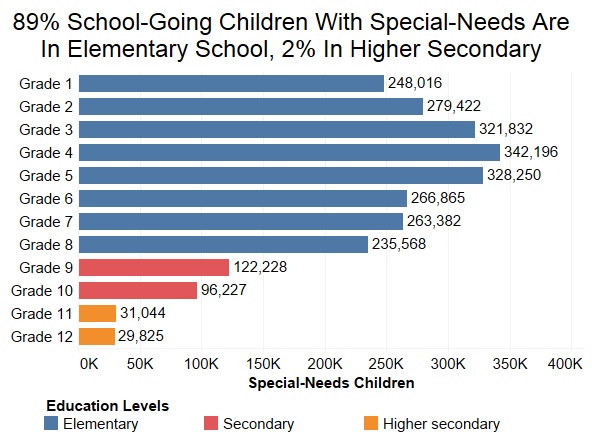Multiple Effective Strategies Of Data Collection In Special Education Classrooms Which You Should Know
18th October 2023

Every child is born with different abilities and has different ways of learning, especially special needs students, this makes the special education needs (SEN) teacher job more challenging. According to scroll.in, almost 89% of school-going children are special needs students.

Source: scroll.in
However, with the help of data collection SEN teachers can make their job easy because the collected data will help teachers understand the unique needs of SEN students and different ways to support them. By collecting reliable and accurate data on SEN students, teachers can make informed decisions and can plan better strategies to implement which will ensure student success.
In this blog post, we will be sharing multiple ways in which you can collect data on your special education classroom students effectively.
So, without any further delay, let’s get started.
1. Frequency/Event and Rate Data Collection Method
One of the effective ways to collect data for your special education classroom is the Frequency/Event and Rate Data collection method. This method can help the teachers track student's different behaviours and how many times they react like that in a particular time period which you can set according to your needs. It can be beneficial for those behaviours that have a clear beginning and end.
For example, teachers can keep track of different behavioural actions such as inappropriate sitting posture, littering, task initiation, focus timing on any task, etc. Teachers can use these data to quantify these behavioural actions and gain valuable insights into student’s frequency and patterns on a daily basis.
2. Duration Data Collection Method
Another effective method of data collection is the Duration Data Collection method. With this method, teachers can be able to focus on measuring or quantifying the length of time of a particular behaviour. Like the Frequency/Event or Rate data collection method, this method is also best suited for behaviours that have a clear beginning and end and not suitable for those behavioural actions which occur at higher rates like shoe tapping, pencil tapping, etc.
You can use this method to measure tasks like- how many times they are asking questions related to any particular topic, how much instruction they are following, assignments and writing completion time, etc. By using this data collection method, teachers can assess every student's engagement rate and identify areas of improvement (if any).
3. Interval Data Collection Method
Interval recording is a data collection method that focuses on whether a behaviour occurs during specific intervals within an observation period. This method involves dividing the observation period into brief intervals and recording whether the behaviours occurred at the end of each interval.
Interval recording is particularly useful when it is challenging to continuously track a behaviour. It is suitable for constant behaviours or those that occur at high rates. By using interval recording, educators can gain insights into the occurrence patterns of behaviours and make data-driven decisions.
4. Time Sampling Recording Data Collection Method
Time sampling recording is similar to interval recording, but it involves recording small samples of time within larger intervals. During each sample, the educator observes the student and notes whether the behaviours is occurring at that instant. This method is effective for behaviours that can be quickly assessed within a short time frame.
Time sampling recording can be used to measure behaviours such as talking, on-task/off-task behaviour, screaming, and in-seat/out-of-seat behaviour. By using this method, educators can gather data on the occurrence of these behaviours and identify any patterns or trends.
Collect Data Of Your Special Education Classroom For Providing Better Support To Students
Every student is special and unique in their own way and has different needs. It’s every special education needs (SEN) responsibility to understand each and every student's needs and find effective ways to support them.
Those teachers who have pursued courses like Special Education Courses for teachers, know how to understand their SEN students and how to guide them better. One of the most effective ways to understand SEN students' different needs is the data collection method. In this blog post, we have shared several methods to collect data on special education classrooms effectively, which will give you a clear idea of how you can help your SEN students in a better way by understanding their unique needs.
Lastly, remember that accurate and reliable data is the foundation for creating personalized and targeted interventions in any special education classroom.
We believe education should be accessible for everyone. That’s why we don’t charge for our blogs. Find the right course that will help you in your career with us, contact us at - 6531631068. You can mail us at act@asiancollegeofteachers.com.
Written By : Abhishek



